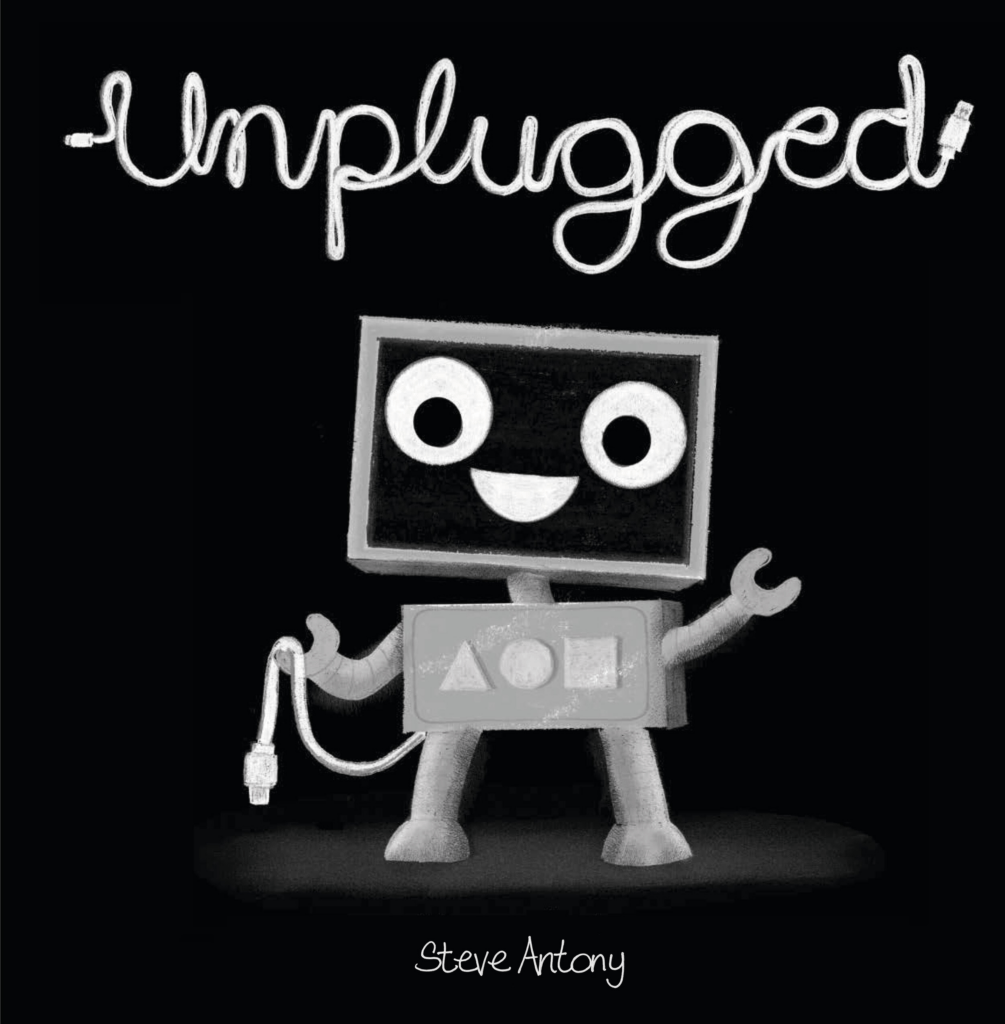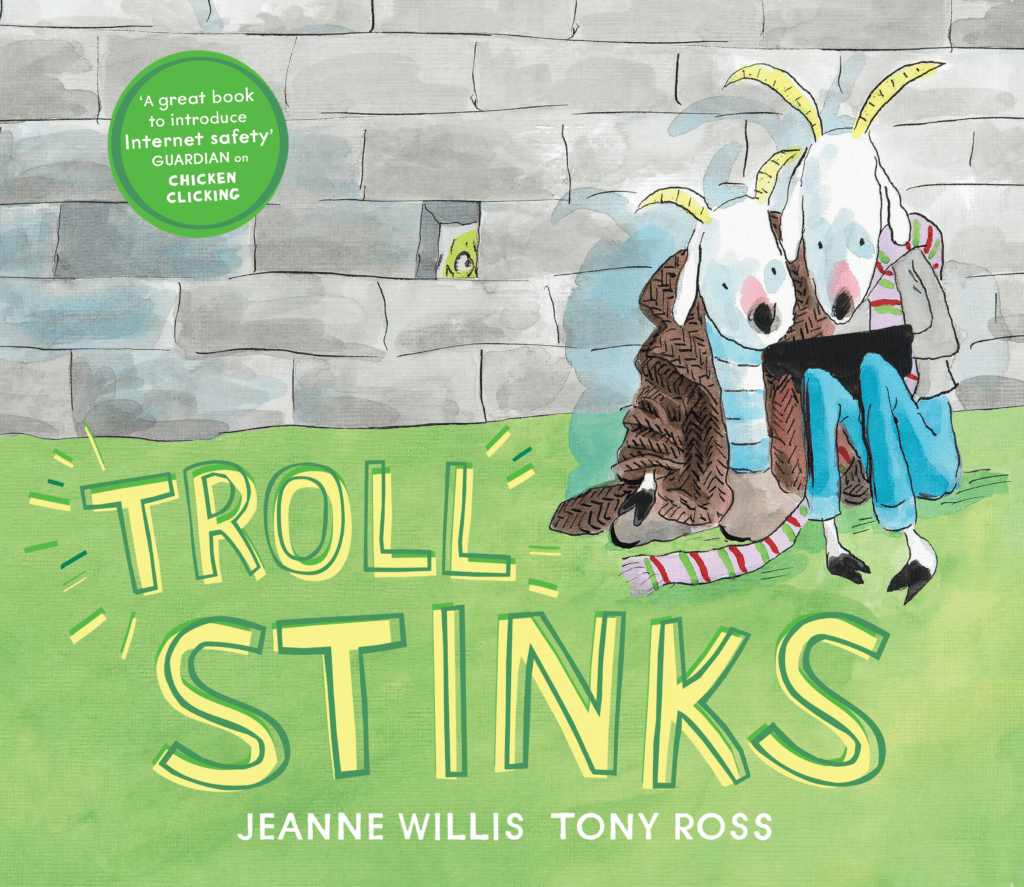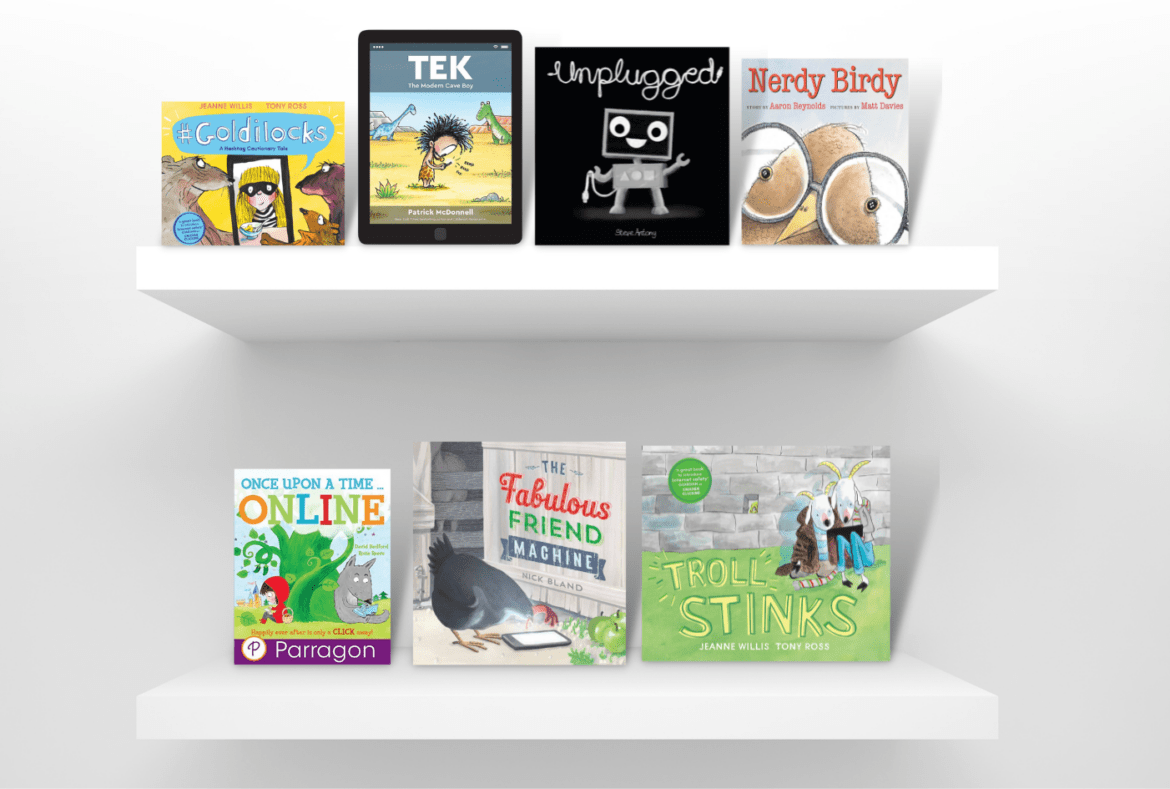Nowadays computers and iPads are as common in the classroom as pencils and paper. When students leave our classrooms, they go home to play on their own personal devices. Teaching healthy digital habits can’t wait; it has to begin the minute we hand a Chromebook to a kindergartener. Teaching healthy digital habits or digital citizenship, as we like to call it, doesn’t have to be difficult or complicated, though. In fact, it can be as easy as sharing a fun read-aloud with your class and using a picture book to teach digital citizenship.
Why Picture Books Work for Teaching Digital Citizenship
Picture books are the perfect, unlikely tool, for teaching digital literacy. Even topics like online bullying and responsible use can be easily taught using the right book. Picture books can be both fun and thought-provoking. Sharing a book on digital citizenship and responsible technology use through a read aloud helps build community with your students and facilitate important conversations on this topic. A picture book lesson can take as little as 15 minutes and requires little to no prep. Here are seven of my favorite picture books for teaching healthy digital habits and digital citizenship to our littlest learners.
1. Unplugged

Out of the many books available about limiting screen time, I use Steve Antony’s “Unplugged.” The message is clear in the text and the illustrations. When Blip the robot is plugged into her computer the illustrations are black and white. When Blip gets unplugged and falls down the stairs and out the door, the illustrations are in color. Children quickly see the point that Antony is trying to make, life online is dull compared to life in the real world.
2. Nerdy Birdy Tweets

“Nerdy Birdy Tweets,” by Aaron Reynolds, is a favorite for teaching responsible use. We all fell in love with Nerdy Birdy in Aaron Reynold’s first book about friendship, and the friendship lessons continue in the second book featuring Nerdy Birdy and Vulture. Students will first notice that Nerdy Birdy is ignoring his friend Vulture while playing an online game. Then Nerdy Birdy posts an embarrassing picture of Vulture on social media. Even though the post is funny, Vulture’s feelings are hurt. After reading this book, I give my students a cell phone template and they write down at least one way to be responsible, one good digital habit, on a cell phone. Then, for fun, they decorate the phone template and we hang them in the hallway.
3. The Fabulous Friend Machine

I use “The Fabulous Friend Machine,” by Nick Bland to teach about the dangers of talking to strangers online. A friendly chicken named Popcorn finds a phone. She is excited that there is someone on the phone messaging “hello,” so she says “hello” back. All day and night, Popcorn messages her new online friends and ignores her barnyard friends. Finally, Popcorn decides to meet her new friends only to discover they are wolves who want to eat her. After this read-aloud, we make posters showing ways to stay safe online.
4. TEK, The Modern Cave Boy

“TEK, The Modern Cave Boy,” written and illustrated by Patrick McDonnell, is always a hit with my students. With a similar theme as “Unplugged,” TEK’s message of limiting screen time is set during prehistoric times. TEK the cave boy spends all his time playing on devices and never leaves his cave. TEK misses out on all the winter fun during the Ice Age and never learns any dinosaur names! Then, one day a volcanic eruption shakes TEK up and helps him see the big beautiful world he has been missing. After reading TEK, students can make a list of activities they would miss if they spent all of their time on a device.
5. #Goldilocks, a Hashtag Cautionary Tale

“#Goldilocks, a Hashtag Cautionary Tale,” written by Jeanne Willis is a familiar story with a digital twist. Goldilocks breaks into the cottage of the three bears and posts pictures of all the damage she does to their house on her social media. The more things she tears up in the bears’ cottage, the more “likes” she gets. Goldilocks is eventually caught and punished because of the pictures on her phone. After a class discussion, students write down ways to be responsible with their digital footprint and note good digital habits on paper footprints that we hang down the hallway.
6. Troll Stinks

“Troll Stinks,” also by Jeanne Willis, is another book that puts a spin on a familiar tale. Before reading, make sure your students are familiar with the story of the “Three Billy Goats Gruff.” In “Troll Stinks,” two billy goats find a phone and have fun taking selfies and calling friends. But then, the billy goats make a bad decision and use the phone to send unkind messages to the troll. The goats are very surprised at the end when they actually meet the troll. This is a great book to use to talk about online bullying and being good digital citizens.
7. Once Upon a Time Online

“Once Upon a Time Online” by David Bedford is a fun book to teach responsible use. Familiar fairy tale characters find a laptop that falls from the sky. Cinderella uses it to buy clothes for the ball and Rapunzel finds a prince online. But as the story continues, the characters get in over their heads and it takes the fairy godmother to fix all the problems they create. Students will giggle while learning important lessons about the important digital habit of getting parental permission before using certain apps and websites.
These seven books are just the tip of the book iceberg! There are many more picture books that teach digital citizenship lessons and promote good digital habits through read alouds. If you are not using picture books yet, start today. And don’t miss out on this quick and effective way to reach even your youngest students.
More Articles on Digital Citizenship
- Five Free, Ready-to-Use Digital Citizenship Resources for PK-12
- Google-ize Your Digital Citizenship
- Resources for Building a Digital Citizenship Program
- Digital Citizen Week Resource Roundup
- Digital Citizenship for Elementary Students
- A Digital Citizenship Framework and Lessons
- Student Online Life: Targeted Digital Citizenship Education
- New Tool for Digital Citizenship

